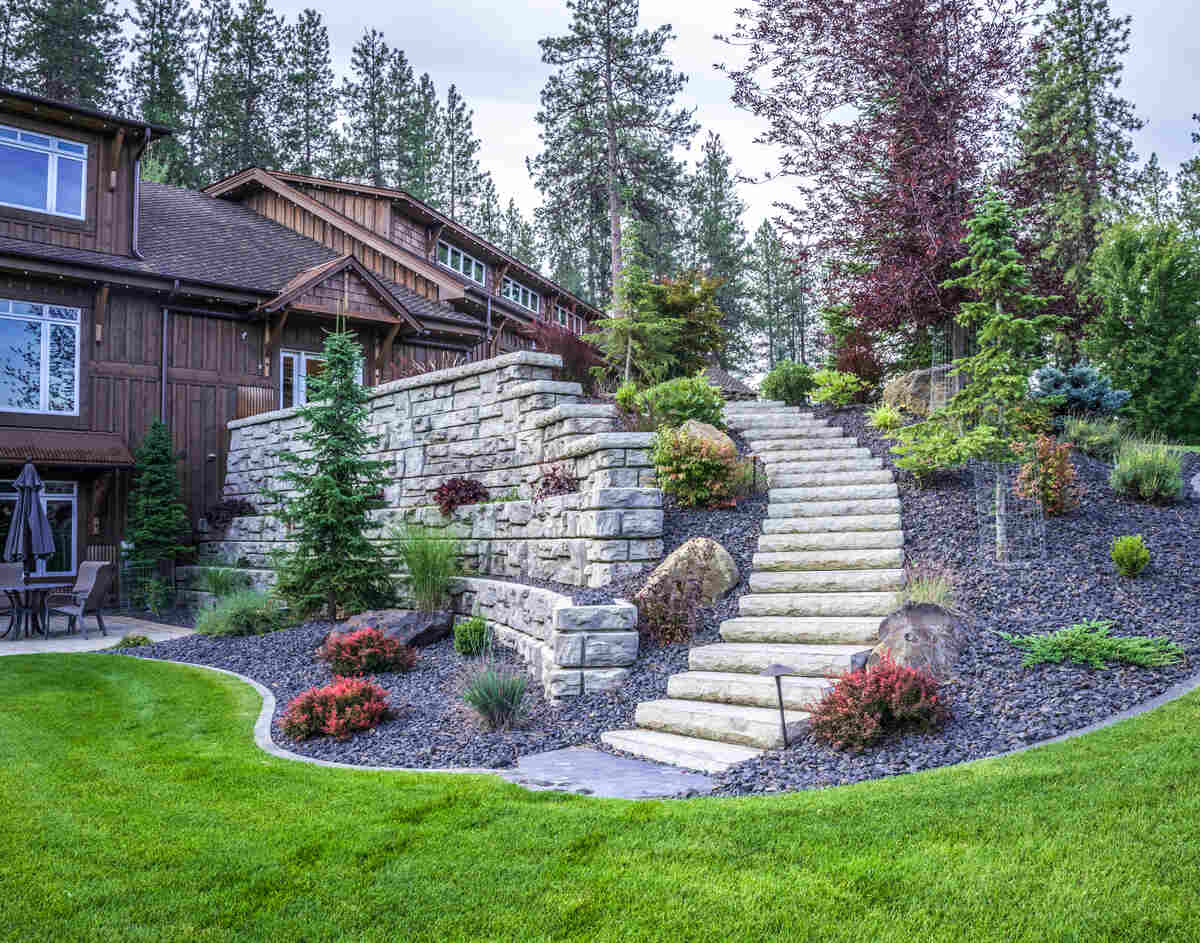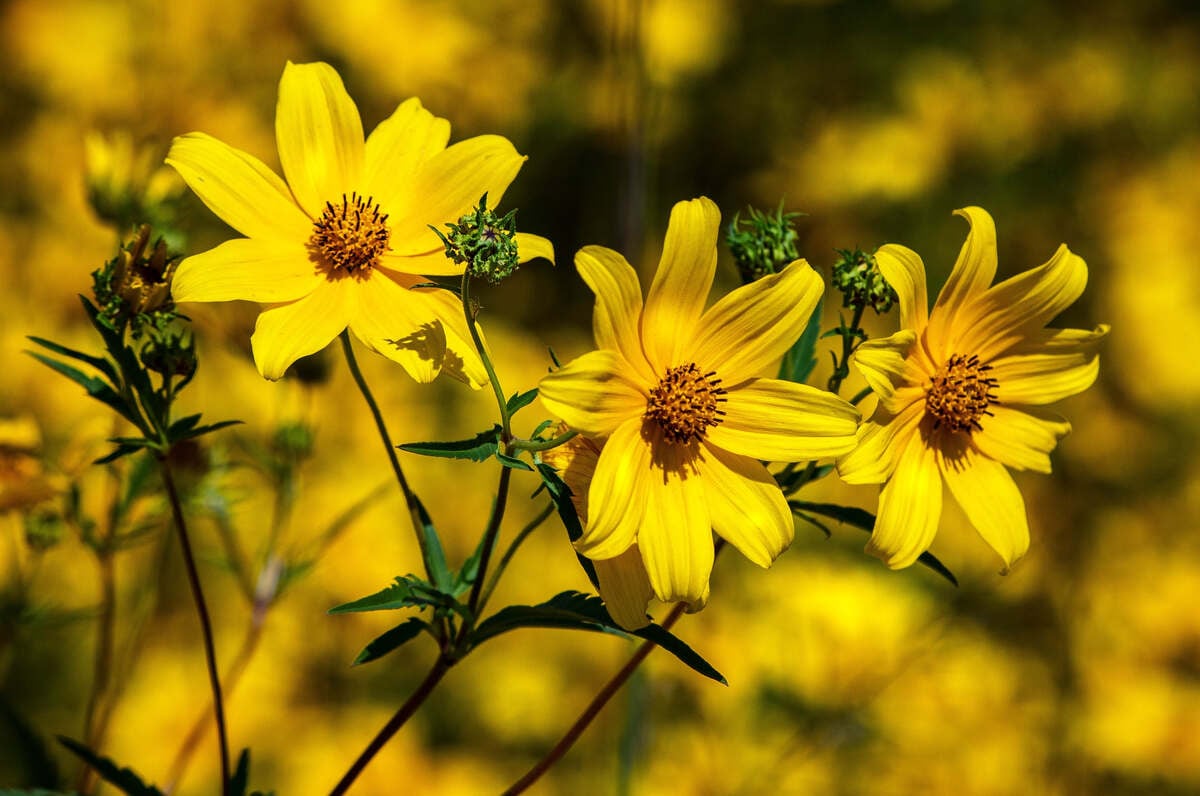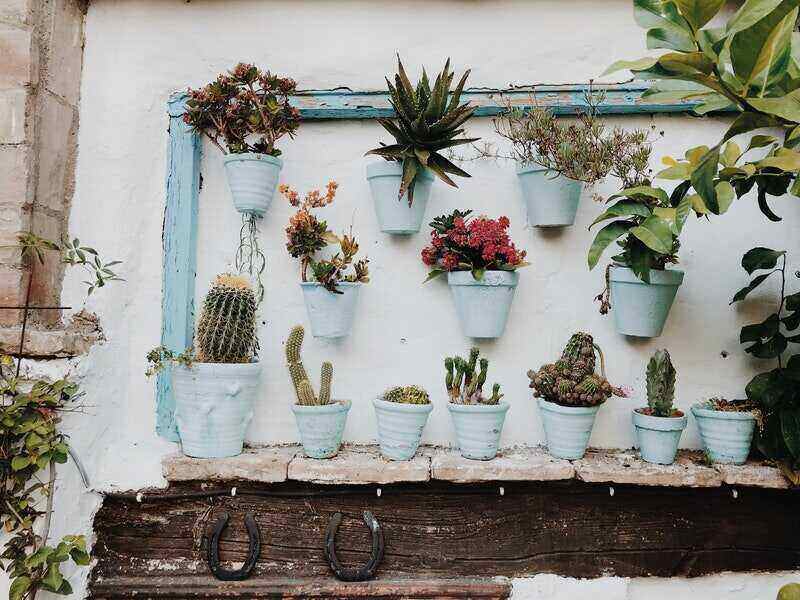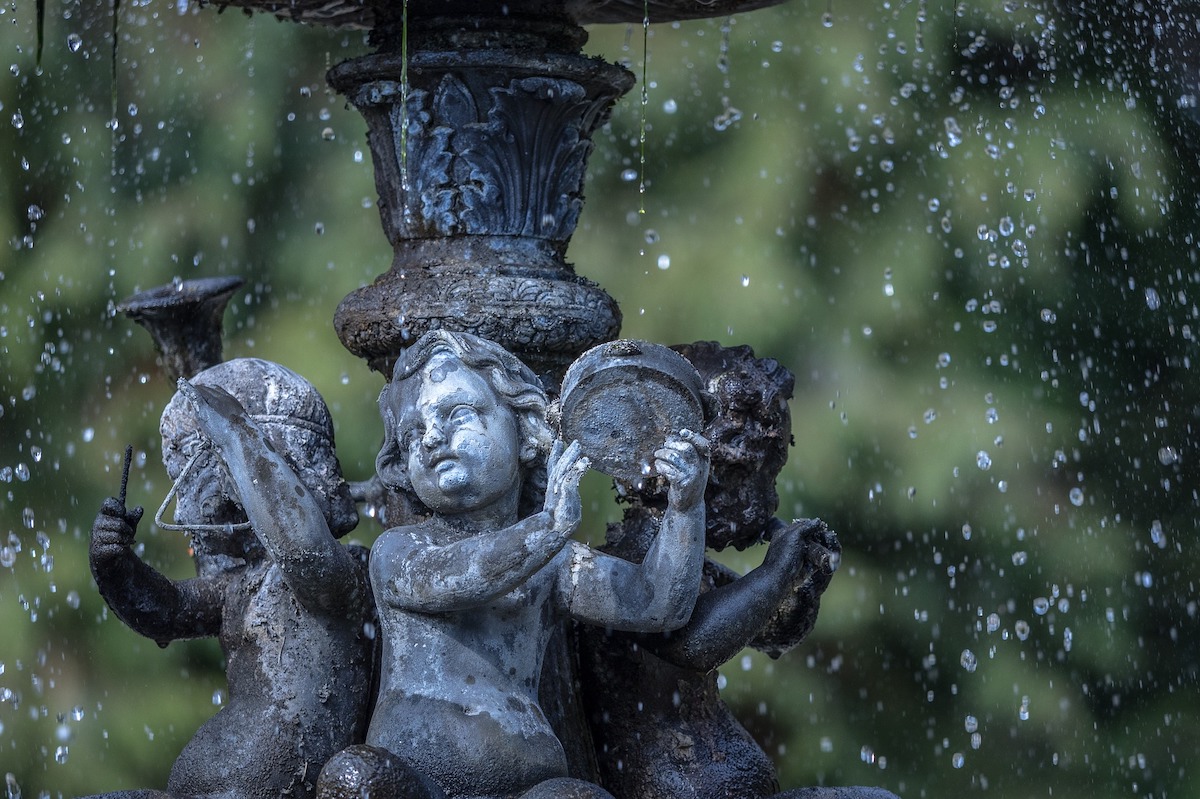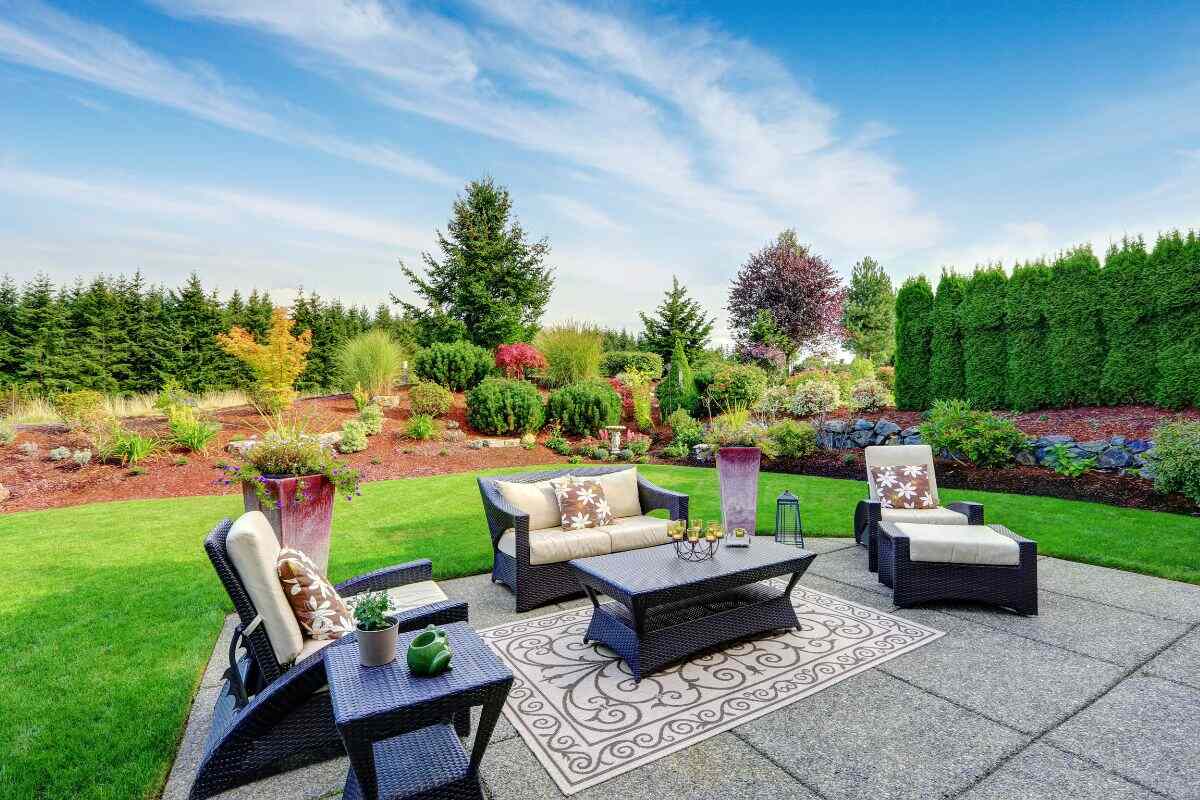
Landscape design is an art form and a science that seeks to create attractive, functional outdoor “rooms” through horticultural science, spatial organization, and artful composition.
I’ll paint you an imaginary picture… Think of your yard as an artist’s palette, and you are Michelangelo in the Sistine Chapel (on a smaller scale, of course).
You want harmonious artistry — trees with arching, pendulous branches, colorful shrubs and flowers drawing butterflies and hummingbirds, meandering white pebble paths guiding you to a water wall as a stunning backdrop for painted wooden benches in calming lavender hues.
Landscape design employs line, form, texture, color, visual weight, and scale. Additionally, design principles like proportion, order, repetition, and unity (just to name a few) help connect spaces and create a pleasing overall look.
Landscape design sounds more complicated than it really is. Think of your landscape designer as the artist who helps turn your vision for your overall yard into a work of art brought to life.
Oh, and how much might landscape design cost you? LawnStarter’s landscape design pricing guide finds that the average landscape designer costs $2,200 to $6,180 per project or about $50 to $150 per hour.
In this article, we’ll explore the following:
- Elements of Landscape Design
- Principles of Landscape Design
- 3 Primary Categories of Landscape Design
- FAQ About Landscape Design
Elements of Landscape Design
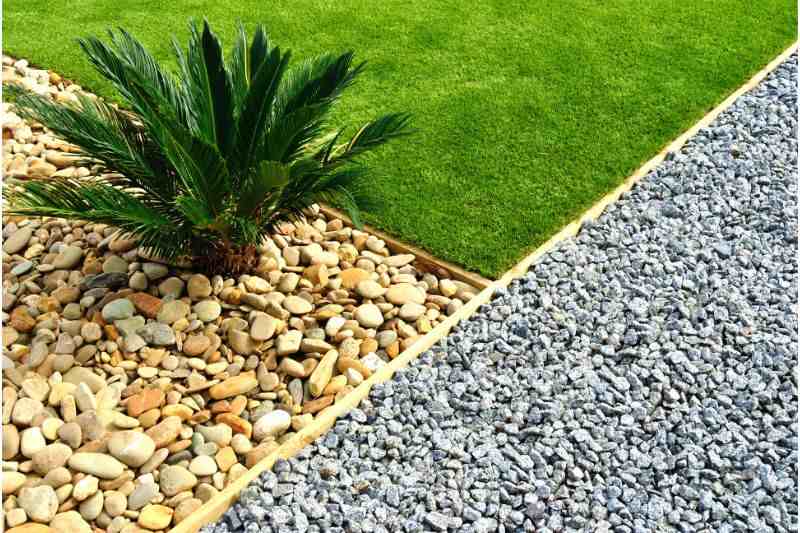
The design process begins by understanding your needs, desires, and site conditions. Once these are determined, the elements (also called features) — line, form, color, texture, visual weight, and scale — create an overall cohesive look. Most common landscape styles incorporate these elements.
Let’s take a closer look at these elements of landscape design:
Lines
In landscape design, lines play a crucial role. They create boundaries between materials, shapes, or linear features, direct eye movement, and establish dominance. A landscape designer uses lines to make patterns, form spaces, create the illusion of movement and unify a theme within the landscape.
Form
Form refers to the visual impact of three-dimensional elements such as plant material, structures, plant beds, and garden ornaments. Forms can be either formal (such as circles, squares, and polygons) or informal/naturalistic (meandering lines, organic edges, and fragmented shapes).
Form also can define negative space. In landscape design, negative space refers to the open areas in a garden, such as lawns, patios, and pools. These spaces provide room for activities and create balance with the positive spaces defined by beds and buildings.
The use of negative space can breathe life into a garden by providing visual relief from the pattern and texture of plants within it.
Color
Color plays an essential role in landscape design. Plant material and hardscaping solutions, such as paving, walls, or fences, all allow for adding dimension and interest with color.
Shrubs and flowers with red foliage pop out in the foreground while plants with blue flowers recede into the background.
Choosing similar hues creates a sense of harmony, while contrasting shades helps capture attention. Landscape designers and landscape architects should also consider if they wish to employ warm or cool tones and whether a color theme would be suitable to tie the entire property together.
Texture
When it comes to landscape design, the texture of plants can play a major role. Texture refers to how the plant’s foliage, flowers, bark, and branches look and feel when touched. The size and shape of the leaves are usually what determine the perceived texture, with plants being categorized as having a coarse, medium, or fine texture.
Visual Weight
Visual weight in landscape design refers to the concept that certain combinations of features have more prominence due to mass and contrast. Areas with a higher visual weight are more noticeable and memorable. Those with low visual weight fade into the background and create a cohesive look by linking together high-weight features.
Scale
In outdoor design, scale refers to the size relationship between elements within the garden and the surrounding spaces. As long as you make size choices suitable for the setting, the scale of your design will be appropriate.
When deciding on the correct scale for plants and landscape structures, consider the size of your home and your available yard space. Larger structures require larger plants and shrubs.
When it comes to landscape design drawings, scale plays a crucial role. Installation crews depend upon this document for exact measurements to install plant material, hardscapes, and waterscapes on-site.
Depending on whether the design is for residential or commercial properties, the designer decides which scale is best for them. For example, 1/8 inch = 1 foot on an architectural scale is ideal for residential landscapes, and 1 inch = 10 feet on an engineer’s scale works better for commercial projects.
Principles of Landscape Design
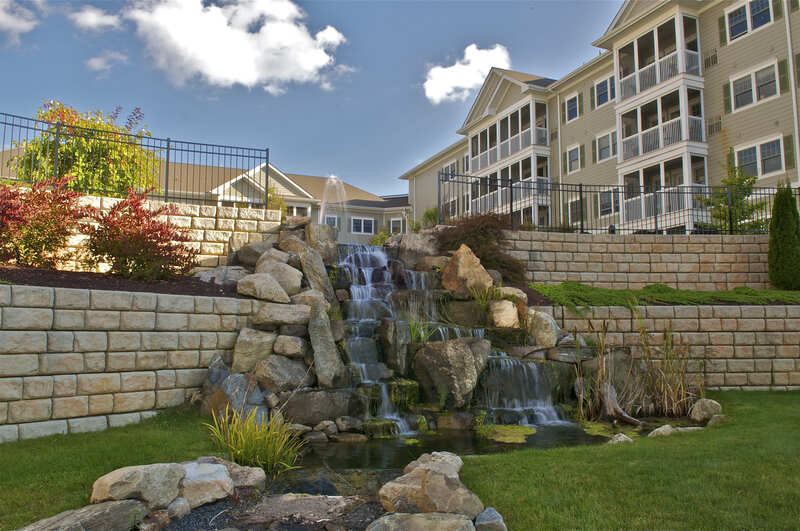
Landscape designers and landscape architects use design principles as guidelines or tools to create attractive, pleasing, and comfortable landscapes. Utilizing and understanding the principles is essential to working through the landscape design process step-by-step.
These are some of the principles of landscape design:
- Proportion
- Order
- Repetition
- Unity
- Balance
- Rhythm
- Emphasis
- Contrast
- Variety
- Heirarchy
- Transition
- Pattern
- Movement
- Sequence
- Focalization
Proportion
Proportion has to do with the size of each element within a landscape when compared with other elements. Today, builders like to build big houses on small plots of land, and this design concept leaves little room for plant material in the yard.
Using columnar trees and narrow, upright-growing shrubs, offset with more rounded plants where space permits, can help soften an imposing structure. Pyramidal, columnar-shaped trees can fit into tight spaces yet help provide the comfortable feel of a broad overhead canopy. For more inspiration, check out our guide on tree shapes.
You must be clever in these situations. Planters placed on pedestals, along with pruning and shaping, can be used to create the illusion of height and fill.
Order
Order refers to the organization and balance in a landscape. You can achieve this in your yard using the more formal (symmetrical) or informal (asymmetrical) balance.
To achieve order in a garden or outdoor space, designers create and use balance by manipulating form, color, size, and texture. This balance can be symmetrical, asymmetrical, or based on perspective and is achieved by creating groupings of features and elements that revolve around a central point.
Repetition
The goal of repetition is to create predictable and familiar patterns and sequences in the landscape. Pattern and orderliness can be achieved by repeating similar design elements — lines, shapes, colors, and textures combine to form a rhythm that is pleasing to the eye.
Repetition is used to add cohesion and visual interest. However, when using repetition, one should be cautious to avoid creating dullness. Having said that, not enough repetition can cause confusion.
Simple repetition refers to lining up the same object in a row or placing geometrical shapes such as squares in an orderly arrangement.
Unity
Creating unity in landscape design ensures that the various elements work together cohesively. This can be achieved by using concepts such as dominance, interconnection, and the Rule of Three.
For instance, lining up three identical plants or pots in a pattern creates a simple repetition that helps to create a sense of visual harmony.
Similarly, placing similar pots along a stone wall promotes unity within the overall design scheme.
Balance
Balance involves creating a visually pleasing distribution of elements. Symmetry or asymmetry is used to achieve an evenly distributed look.
With this balanced approach, designers can create beautiful outdoor spaces that are both inviting and aesthetically pleasing.
- Symmetrical balance (formal balance) is a popular strategy in which intentionally equalizing design elements creates a sense of stability and beauty. To achieve a symmetrical balance, designers place plants or decorations of equal height, width, and shape on either side of a central point or axis.
- Asymmetrical (informal) balance achieves an informal, natural look. Asymmetrical balance creates a different aesthetic on either side, creating the illusion of a relaxed and more enhanced free-flowing space.
Rhythm
Rhythm in landscape design refers to the repetition of elements that helps form an underlying structure. Spacing plants, trees, or other items evenly throughout a garden can help create an orderly pattern and flow.
Additionally, using unified colors, materials, and textures within a given area helps create a visual rhythm that guides viewers from one section of the garden to the next.
Emphasis
Emphasis is where the eye is first drawn when looking at a particular outdoor space. It can become a prominent element in a design by highlighting this focal point and making it stand out.
Contrast
Contrast is used to highlight certain elements in your design. Contrasting colors, plant sizes, textures, leaf structures, and more, when placed side-by-side, can add interest and draw the viewer’s attention.
The juxtaposition between fine and coarse textures helps different elements in a landscape design look unified.
Variety
When designing a landscape, creating visual variety with different shapes, colors, and textures with hardscaping (like walls and paths) and softscaping (like trees or grass) is important.
To create a harmonious landscape, strive for a balance between these elements while also providing enough diversity to make the area interesting.
Heirarchy
Hierarchy refers to using visual cues to create a sense of order and organization. This can be achieved by creating contrast through different elements such as size, proportion, placement, or spacing.
Various techniques, such as adjusting the size of design elements or incorporating vibrant colors, draw attention and highlight specific areas. Larger elements and stronger colors in the foreground can be the starting point.
Transition
Transition means creating a smooth change from one side or area of the design to another. This is usually done by using plants of differing heights, sizes, shapes, colors, and texture changes.
By using transition elements, landscape designers can create a natural and beautiful outdoor space.
Pattern
Patterns are used to create order and structure throughout a space. These patterns can include the placement of trees, shrubs, lawns, and geometric shapes within the hardscape surfaces. In addition, landscape design often features paths, gazebos, and trellises to contribute to the overall aesthetic of the environment.
Understanding how these elements interact with one another helps create well-balanced landscapes that are both beautiful and practical.
Movement
Movement plays an important role in landscape design. For example, “implied movement” has been used for centuries in Asian-style gardens to create a peaceful atmosphere. They rake patterns in the sand — meant to mimic flowing water — and arrange stones in a circular formation to represent islands in the ocean.
Movement can bring a serene aesthetic to any outdoor space when implemented correctly.
Sequence
Sequence involves creating smooth transitions to the size, shape, and texture of plants. This is done by making gradual changes one element at a time.
Abrupt changes from a tall plant to a short one or from a fine-textured plant to a rough one usually look bad and should be avoided.
Focalization
Focalization is a great way to add interest and drama to your landscape design. It involves using one object that stands out from the rest and draws the eye. Things like statues, water features, sculptures, and unusual plants are all great choices for focal points.
Remember that it should be something personal — a feature that speaks to your style and interests! Focalization can also be called emphasis.
3 Primary Categories of Landscape Design
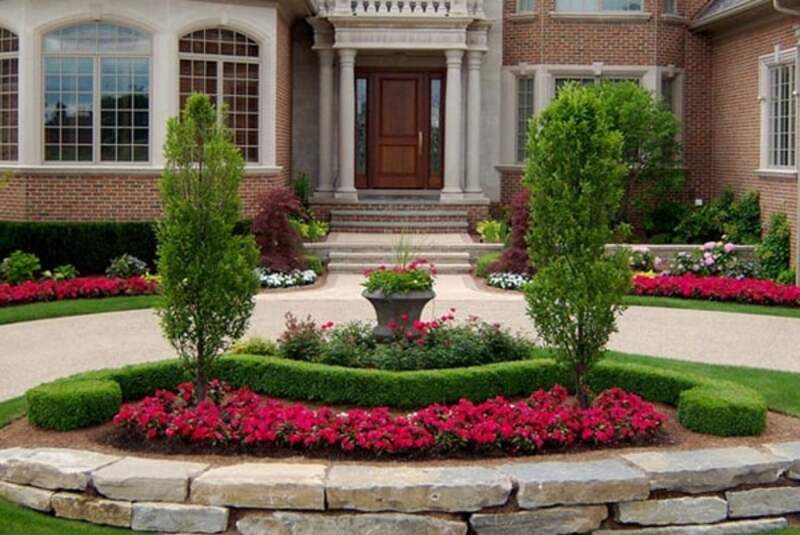
Listed below are the three primary categories used in landscape design. They are not listed in order of importance because they all should work together.
- Hardscapes refers to non-living components of the outdoor space, such as pavers, patios, walkways, walls, and any other built features.
- Softscapes refers to plant material (living organic features comprising trees, shrubs, plants, and flowers). Adding lighting contributes to the softscape by putting a finishing touch to the setting, tying everything together to create a beautiful space for all to enjoy.
- Waterscapes incorporate water features like waterfalls, ponds, and water gardens into an outdoor space. This type of design is meant to bring a natural element to the environment while also providing an area for relaxation and recreation.
FAQ About Landscape Design
What are the benefits of landscape design?
- Creates the ability to connect with nature.
- Landscape design can help protect natural wildlife.
- Supports biodiversity
- Creates functional areas out of unused spaces.
- Maximizes the use of outdoor living areas while defining entertainment spaces to create a balanced layout between man-made structures and nature.
- Boosts property value.
- Achieves an easy-care look for long-lasting beauty year-round.
Who would you call for a landscape design?
If you’re looking to design your landscape, it would be best to call upon the services of either a landscape designer or a landscape architect. However, it is important to choose the right professional depending on the scope and requirements of your project.
- Landscape Designers: Landscape designers are professionals with an Associate’s Degree in Science, horticulture, or landscape design. Their expertise includes designing outdoor spaces for residential and commercial sites.
While landscape designers may tackle less complex site challenges than landscape architects, their scope of work is still quite extensive. Landscape designers are experts in creating stunning designs that address many different features, such as softscapes, hardscapes, waterscapes, pools, outdoor spaces, lighting, retaining walls, garden walls, and more.
Landscape designers can work for a landscape design firm and/or landscape build companies or be self-employed. The average yearly salary for a landscape designer is around $49,000 or more. While some may be self-taught and learn on the job, most receive formal education and training in landscape design. - Landscape Architects: Landscape architects usually have a bachelor’s degree or a master’s degree in landscape architecture. They also undergo an intensive licensing process to practice, much like a doctor needs to get a license.
Design projects for landscape architects are typically campuses, office parks and public parks, stormwater management, ecology, and sustainable spaces. Landscape architects create master plans, including site plans and construction drawings, wetlands protection, etc.
Landscape architecture firms, land planning firms, and architectural firms typically employ landscape architects. To practice, these professionals must obtain a license in their state. The field is known for its average annual salary of $75,000 or more.
Do landscape professionals design lighting plans?
Landscape designers and landscape architects can indeed design lighting plans as part of their services. In fact, a well-designed lighting plan is essential for enhancing the beauty and functionality of outdoor spaces.
From creating safe walkways, highlighting stunning garden features, and uplighting plant material and structures, a custom lighting system can achieve various lighting goals while also being energy-efficient and long-lasting.
With collaboration between you and your designer or architect, your outdoor space can be transformed with the perfect custom lighting plan.
When to Hire a Landscaping Pro
Landscape design combines art, science, spatial organization, and knowledge of environmental factors like topography and water run-off. LawnStarter connects you to local landscape designers or landscape architects to design your yard (front yard, backyard, and any side yards — or just parts of your property).
Make sure to choose the correct landscaping professional depending on the scope and requirements of your project. Landscape design can be an effective way to get beautiful results for your yard.
Main Image Credit: irina88w / Canva Pro / License
